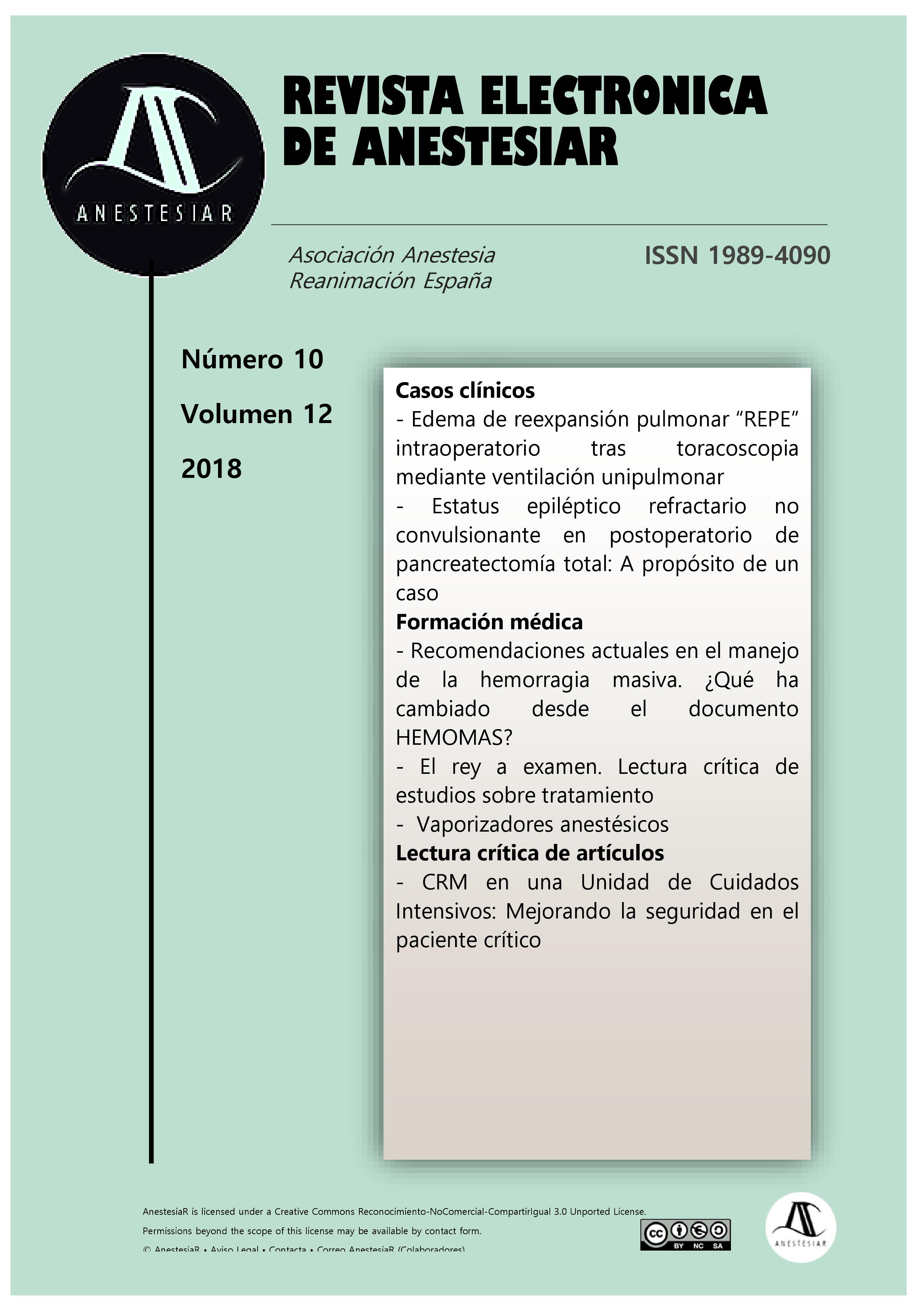Anaesthetic vaporizer
DOI:
https://doi.org/10.30445/rear.v10i12.677Keywords:
vapour pressure, sevoflurane, anesthetic, vaporizer, draguer, tec, aladin, sevoflurano, inhalationAbstract
Approaching an anaesthetic respirator (or a workstation for the finer ones) is to approach a relatively new machine: the current models are presented with futuristic designs, showing a variety of screens and little lights, and look more like a Tesla vehicle console than a patient ventilation device. The truth is that the technology of a respirator rests more on mechanical aspects than on electronic aspects. And next to the respirator is almost always the vaporizer. The anesthetic vaporizer has become a fundamental element in the design of a respirator and represents the work of an anesthesiologist in the operating room. The purpose of this paper is to show something more about the evolution and functioning of these devices. An engineering design that accompanies our professional life.
References
Vanegas, A. (1985). Equipo mínimo de anestesia drogas y monitoría. Rev Col Anest, 13, 91-96.
Parra, C. J. (1994). Flujos bajos-Circuito cerrado con vaporizadores termocompensados. Rev. colomb. anestesiol, 22(3), 235-8.
Dos Santos, J. (2006). Anestesia con bajos flujos desde una perspectiva histórica. Boletín Médico de Postgrado, 22(1-2).
Durand, A. A., & Lemus, C. C. (2017). Consideraciones para la selección, diseño y evaluación de vaporizadores. Industria química, (49), 156-171.
LLC, M. C., & Miller, R. D. (2009). Miller's anesthesia. Elsevier.
Downloads
Published
How to Cite
Issue
Section
License
Copyright (c) 2018 Revista Electrónica AnestesiaR

This work is licensed under a Creative Commons Attribution-ShareAlike 4.0 International License.
 Envío y derechos de autor
Envío y derechos de autor


 Revista Electrónica AnestesiaR by
Revista Electrónica AnestesiaR by 